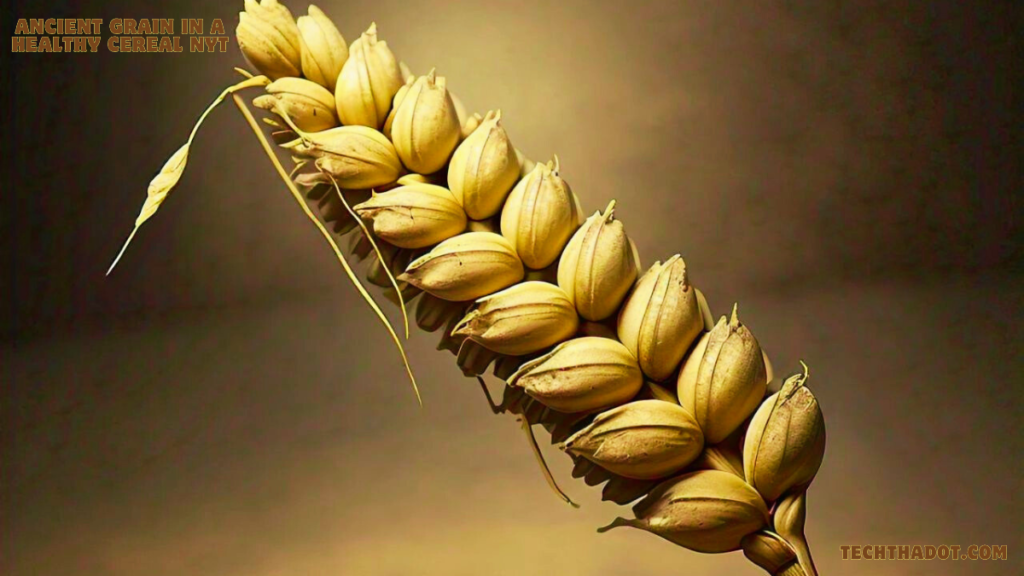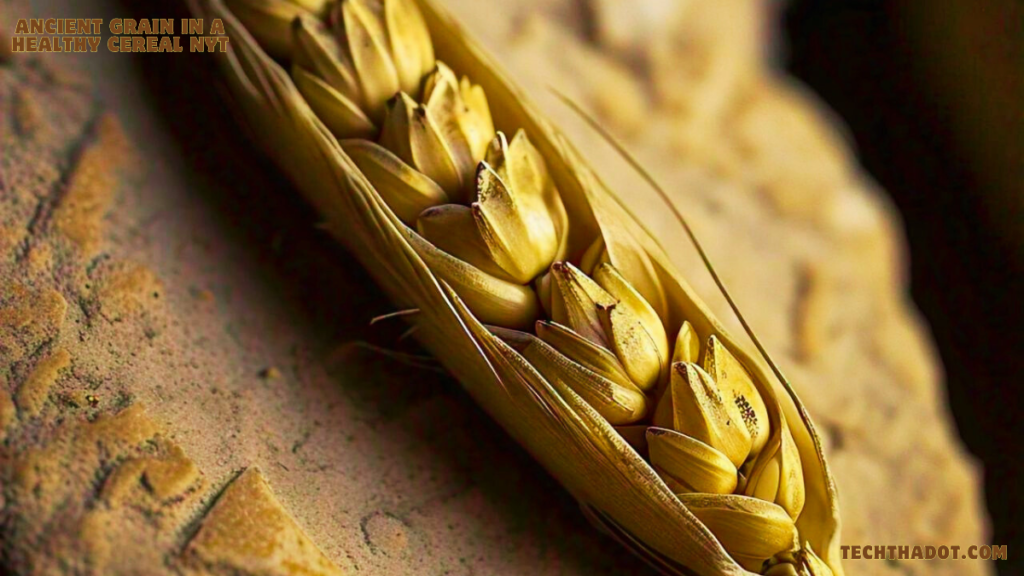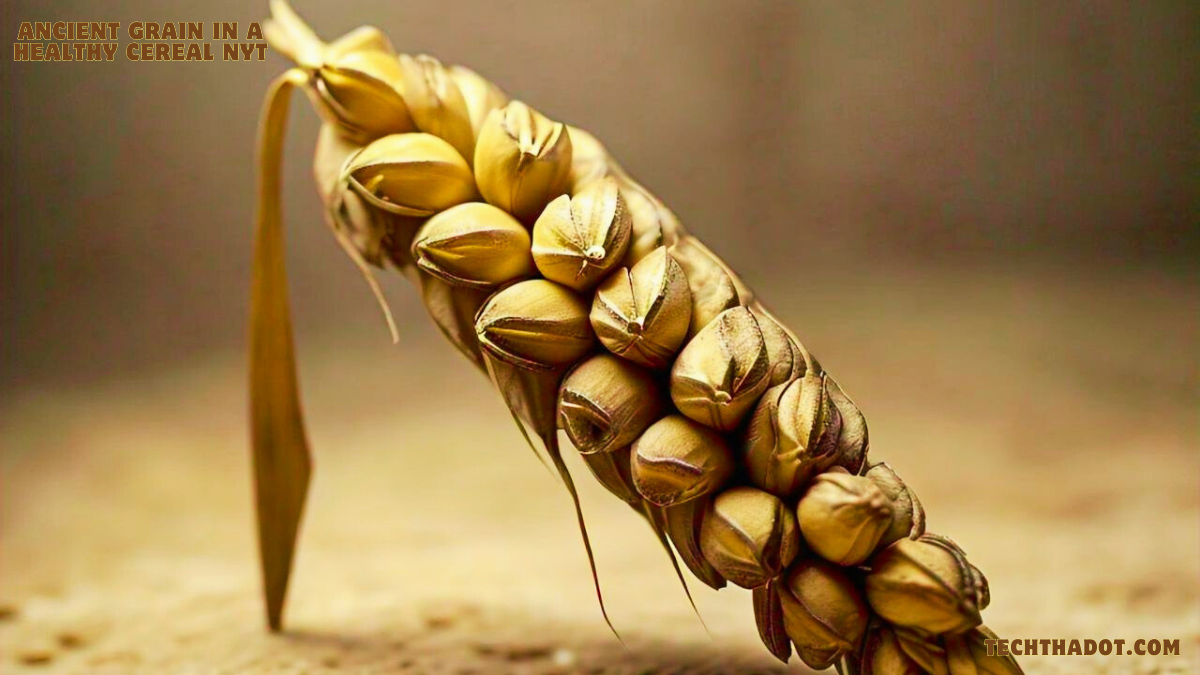- 1 I. Introduction
- 2 II. Historical Background of Ancient Grain in a Healthy Cereal NYT
- 2.1 III. Nutritional Benefits of Ancient Grain in a Healthy Cereal NYT
- 2.2 IV. Ancient Grains in Modern Healthy Cereals
- 2.3 V. Ancient Grain in a Healthy Cereal NYT Case Studies or Features
- 2.4 VI. Ancient Grain in a Healthy Cereal NYT Challenges and Considerations
- 2.5 VII. Future Trends and Innovations
- 3 VIII. Conclusion
I. Introduction
Ancient grain in a healthy cereal nyt are cereals and seeds that have remained largely unchanged over the centuries. Unlike modern grains such as wheat or corn, which have been extensively bred for agricultural efficiency, ancient grains retain their original characteristics and nutritional value. Examples of ancient grains include quinoa, farro, spelled, millet, amaranth, and teff. These grains were staples in the diets of ancient civilizations and are now being rediscovered for their health benefits.
Importance of Ancient Grains
The resurgence of ancient grains in modern diets is driven by a growing awareness of their nutritional superiority and potential health benefits. They are often richer in protein, fiber, vitamins, and minerals than their modern counterparts. Additionally, many ancient grains are gluten-free, making them suitable for individuals with gluten sensitivities. As more people seek whole, unprocessed foods, ancient grains have become a popular choice for health-conscious consumers.
Context of Healthy Cereals
In the quest for healthier breakfast options, ancient grains are increasingly being incorporated into cereals. Traditional cereals, often high in sugar and refined grains, are being replaced with nutrient-dense alternatives that include these time-honored grains. By adding Ancient Grain in a Healthy Cereal NYT to cereals, manufacturers are offering consumers a way to start their day with a nutritious, energy-boosting meal that supports overall wellness.
II. Historical Background of Ancient Grain in a Healthy Cereal NYT
Origins and History Ancient grains have been cultivated for thousands of years and have played a significant role in the diets of early civilizations. For instance, quinoa was a staple food for the Incas and was widely consumed in Europe during the Middle Ages, and millet has been a critical crop in Africa and Asia for millennia. These grains were not only sources of sustenance but also held cultural and religious significance.
Traditional Uses Historically, ancient grains were consumed in various forms, including whole grains, ground into flour for bread, or used in porridge. Their versatility made them a dietary mainstay across different regions. These traditional uses are being adapted to modern cooking methods, preserving their heritage while catering to contemporary tastes.
III. Nutritional Benefits of Ancient Grain in a Healthy Cereal NYT
Rich Nutrient Profile Ancient Grain in a Healthy Cereal NYT are celebrated for their dense nutrient content. They are excellent sources of essential nutrients such as iron, magnesium, zinc, and B vitamins. For example, quinoa is rich in protein and contains all nine essential amino acids, making it a complete protein. Farro and spelled are high in fiber, which aids in digestion and promotes a healthy gut.
Health Benefits The health benefits of ancient grains are numerous. Their high fiber content supports digestive health and can help prevent constipation. The low glycemic index of many ancient grains makes them ideal for maintaining stable blood sugar levels, which is particularly beneficial for individuals with diabetes. Additionally, the antioxidants found in these grains contribute to heart health by reducing inflammation and oxidative stress.
Comparison with Modern Grains When compared to modern grains like wheat and corn, ancient grains often come out on top in terms of nutritional value. Modern grains have been modified to enhance yield and ease of processing, often at the expense of nutritional quality. In contrast, Ancient Grain in a Healthy Cereal NYT is minimally processed, retaining its natural nutrients and offering a more wholesome alternative.

IV. Ancient Grains in Modern Healthy Cereals
Incorporation in Cereals The integration of ancient grains into cereals marks a significant shift towards healthier breakfast options. Cereal manufacturers are now blending grains like quinoa, and amaranth, and spelled into their products to create nutritious and delicious offerings. These cereals provide a balanced start to the day and cater to the increasing demand for clean, natural ingredients.
Examples of Products Several cereal brands have embraced ancient grains, offering products that highlight their health benefits. For example, brands like Kashi, Bob’s Red Mill, and Nature’s Path feature cereals that include a mix of ancient grains, providing consumers with a variety of options. These cereals are often marketed as organic, non-GMO, and gluten-free, appealing to a broad range of dietary preferences.
Consumer Trends The growing popularity of ancient grains in cereals reflects broader consumer trends toward whole foods and plant-based diets. As people become more informed about the nutritional content of their food. They are gravitating towards options that support long-term health. Ancient grains, with their rich history and robust nutrient profile, are perfectly aligned with these trends.
V. Ancient Grain in a Healthy Cereal NYT Case Studies or Features
Spotlight on NYT Articles The New York Times has featured several articles highlighting the benefits of ancient grains in cereals. Often emphasizing the shift towards more nutritious breakfast options. These articles frequently discuss the role of ancient grains in promoting health and wellness, offering insights into their growing popularity.
Interviews or Expert Opinions Experts in nutrition and food science have praised ancient grains for their health benefits. Interviews featured in NYT articles often include dietitians and researchers who advocate for the inclusion of these grains in daily diets. Their insights underscore the value of ancient grains as part of a balanced, nutrient-rich diet.
VI. Ancient Grain in a Healthy Cereal NYT Challenges and Considerations
Cost and Accessibility One of the challenges of incorporating ancient grains into cereals is their cost and accessibility. Ancient grains are often more expensive than modern grains due to lower yields and more labor-intensive farming practices. This can make products containing these grains less accessible to some consumers.
Taste and Texture While ancient grains offer numerous health benefits, their taste and texture can differ from what consumers are accustomed to. Some grains may have a nuttier flavor or a chewier texture, which may require an adjustment period for those used to more refined cereals.
Sustainability and Farming Practices The sustainability of ancient grain farming is another important consideration. Many Ancient Grain in a Healthy Cereal NYT are grown using traditional methods that are more environmentally friendly. However, increasing demand could lead to challenges in maintaining these sustainable practices, particularly if large-scale production becomes necessary.

VII. Future Trends and Innovations
Emerging Varieties As interest in ancient grains continues to grow, we may see the introduction of lesser-known varieties into the market. Grains like fonio, einkorn, and emmer could become the next big thing in healthy cereals, offering even more diversity in terms of flavor and nutrition.
Innovation in Cereal Products Cereal manufacturers are likely to continue innovating with Ancient Grain in a Healthy Cereal NYT, creating new products that cater to evolving consumer preferences. This could include the development of new blends. Enhanced flavors, and even functional cereals that target specific health concerns such as heart health or digestive wellness.
VIII. Conclusion
Ancient grains have carved out a significant place in the modern diet, particularly within the realm of healthy cereals. Their rich history, exceptional nutritional value, and alignment with current health trends make them an appealing choice for consumers seeking to improve their diet. As we look to the future.
The continued exploration and innovation in the use of Ancient Grain in a Healthy Cereal NYT will likely keep them at the forefront of healthy eating trends. Whether for their robust nutrient profile or their connection to ancient cultures, ancient grains are here to stay. Offering a delicious and nutritious way to start the day.
